There should have been a “History of the Offworld Colonies” post this weekend, but in its absence we bring you this special report on how I spent my weekend instead of writing one…
Eventually Bright Angel Trail opened up and the mule rides began setting out from the Grand Canyon village, as they still do today. When Grand Canyon became a National Park, the park service kept the tradition going, and it’s still going strong.
At one point during all those years, the Goodnight family visited the Canyon and Jim Goodnight, then around 12 years old, got a standby ticket for the mule rides, which even then booked up their reservations long in advance. As it happened, one of the ticketed riders chickened out at the last minute, and Jim thought he had it made. He was actually on the mule when the other rider’s friends talked him into going after all, and so Jim didn’t get to go.
Now, as far as I’m concerned, when a 12-year-old kid is actually on the mule, it’s too late to change your mind about backing out. But that’s the way it happened.
Jim Goodnight’s my Dad. So a year ago, when I was making reservations for my “Epic July Road Trip” (see earlier blog posts about that), I made an extra reservation for a year further out, which is how far ahead you have to make your plans for that mule ride. So this past weekend, my Dad and I visited the Grand Canyon, and he finally got that mule ride.
The mules were actually a bit late— the wrangler said while leading them over from the stables all on one line, the mules managed to wrap themselves around a telephone pole and took a while to untangle. While this wasn’t the best thing to hear about animals we were about to trust along narrow trails beside sheer drops, we were undaunted! The wrangler gave our group an orientation talk, we mounted the mules, and set out down Bright Angel trail with our trail guides Josiah and Darby (the most Western-y names possible for a trip like this).
I couldn’t take as many pictures on the trail as I’d like: it’s only possible to take pictures when the mules stop for a rest, when you hook the reins over your saddle horn (which the guides call “putting the mules in park”) and have your hands free. Still, I took as many as I could. The rain left beads of water on the camera lens, as you can see below, but fortunately the camera itself was waterproof and had no trouble.
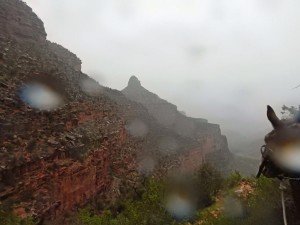 |
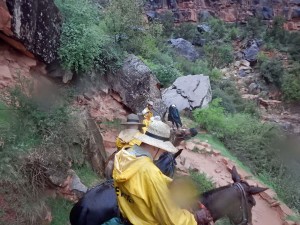 |
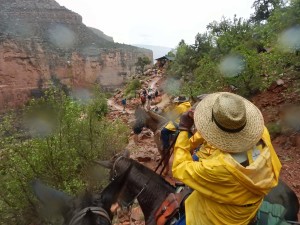 |
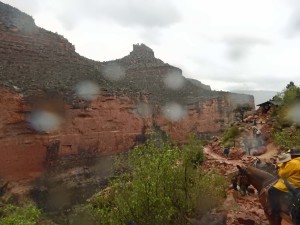 |
Indian Garden is a campground halfway down (measured vertically) Bright Angel trail. As the Grand Canyon formed, the softer sedimentary rocks above eroded more quickly than the harder granite below, so the walls of the upper canyon receded and left large stretches of relatively flat land between them and the inner canyon. Run-off streams water these areas in some places, producing oases in the Grand Canyon’s desert ecosystem. Indian Garden is one, so named because it was once home to farms of the Ancestral Puebloans— the same people who built the cliff dwellings at Mesa Verde National Park. Like those at Mesa Verde, the Puebloans of the Grand Canyon abandoned the area somewhere between 1100 and 1400 AD.
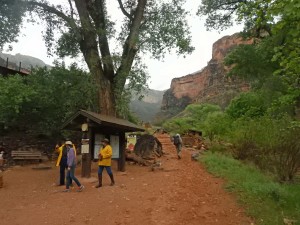 |
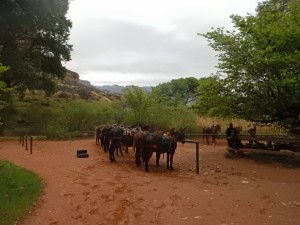 |
At Indian Garden we stopped and dismounted our mules, for a lunch (and bathroom) break. By now the rain had mostly stopped (though it sprinkled on and off again for the rest of the ride), and although it was still chilly the temperature was getting more moderate as we descended into the canyon. Temperatures at the very bottom are typically twenty degrees warmer than on the rim.
Last year, during my Epic July Road Trip, I hiked down Bright Angel Trail as far as Indian Garden, had lunch, and then hiked back out again— this is as far as the Park Service recommends anyone try to hike in one day. So Indian Garden was as far into the Grand Canyon as I’d ever been. It was all new from here.

Nestled in another oasis within the canyon, Phantom Ranch lies on the north side of the river— I didn’t get a picture of the bridge we crossed from the south side on the way down, but look below for one I took looking back. The campground was built in the 1920s by the Fred Harvey company (in times before the National Park), with cabins designed by architect Mary Colter (one of the few woman architects in her time, and the designer of most of the historic buildings on the south rim of the canyon).
Some scenes around Phantom Ranch:
It’s impossible to understand the scale of the Grand Canyon when viewing it from the rim, despite how impressive the view. When a side expedition from Coronado’s force in the 1500s became the first Europeans to see the canyon, the commander sent scouts down to look for a place to ford what seemed like a small river down at the bottom. Today, you can know how that story turned out but still not really see it. You can see Indian Garden from the south rim and know it’s only halfway down: but your eye insists that it’s close to the bottom. It looks like it’s a long horizontal distance from the rim as well, but it’s actually huddled quite close to it, but you can’t make yourself see that either. Only when you get to the bottom do you start to realize the true size of the Grand Canyon. This illustration might help:
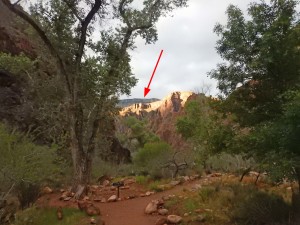 |
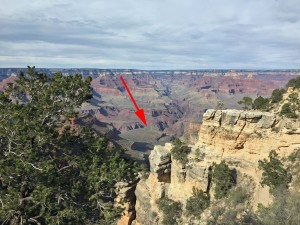 |
At left, a view from Phantom Ranch back toward the south rim. You see a distant, high edge, beyond the closer cliff lit up by the sun (red arrow). You might think that’s the south rim. It isn’t. You can’t see the south rim from Phantom Ranch, and you can’t see the Colorado River from the rim, except in a few places where you look right down side canyons. No, that’s the rim of the inner canyon— shown by the red arrow in the picture on the right, taken from the south rim.
We would have more opportunity to appreciate the real scale of the canyon on the ride back up, Saturday morning, which took us up the South Kaibab Trail and past views that really showed off the Grand Canyon’s size.
Hikers going down to Phantom Ranch generally descend South Kaibab trail, and climb out on Bright Angel. The reason is that South Kaibab is shorter (and therefore steeper), and has no drinkable water or shade along the route, while Bright Angel has plenty of both. The mules, however, take the opposite route. Unlike two-legged hikers, the four-legged variety find going downhill more difficult than up. So the same features that make Bright Angel the better uphill choice for humans make it the downhill choice for mules.
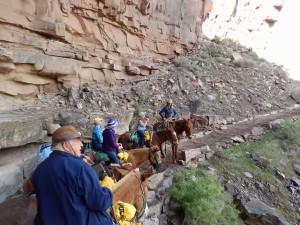 |
The mules pause for a rest while Darby describes some of the sights. Or possibly tells a bad joke (there were plenty of those). |
Some more perspective on the scale of the Grand Canyon. As we reach a rest stop where we dismounted the mules for a while, are we actually in a canyon, or somewhere in an open plain with mountains in the distance?
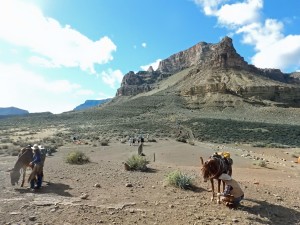 |
 |
And in case you’re wondering: No, none of those rims against the sky is the actual rim of the canyon, which is still out of sight.
But not before we all received a certificate of our achievement, one that’s been handed out to every rider since the 1920s when the Harvey Company operated Grand Canyon village.
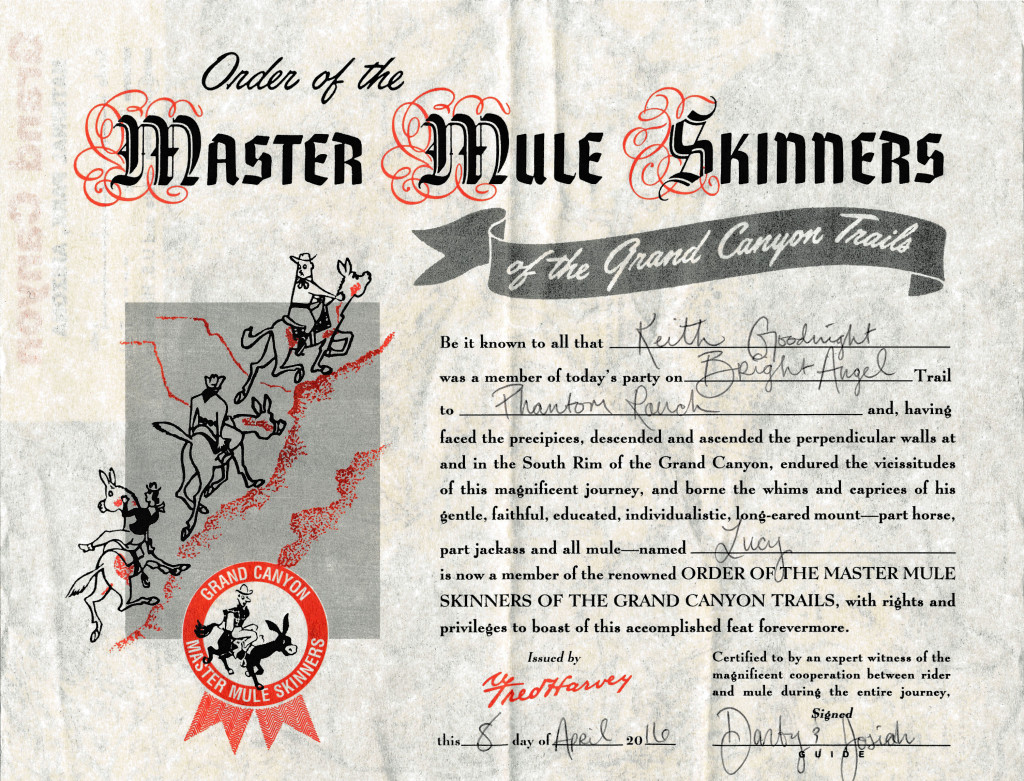
And so ends me and my Dad’s ride into history. Thanks for coming along; next week, this blog will go “back to the future” with the further history of the United Colonies. See you then!

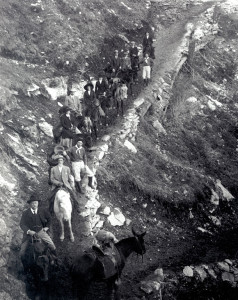
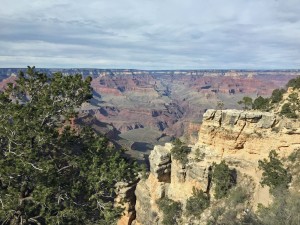
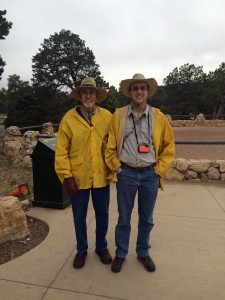
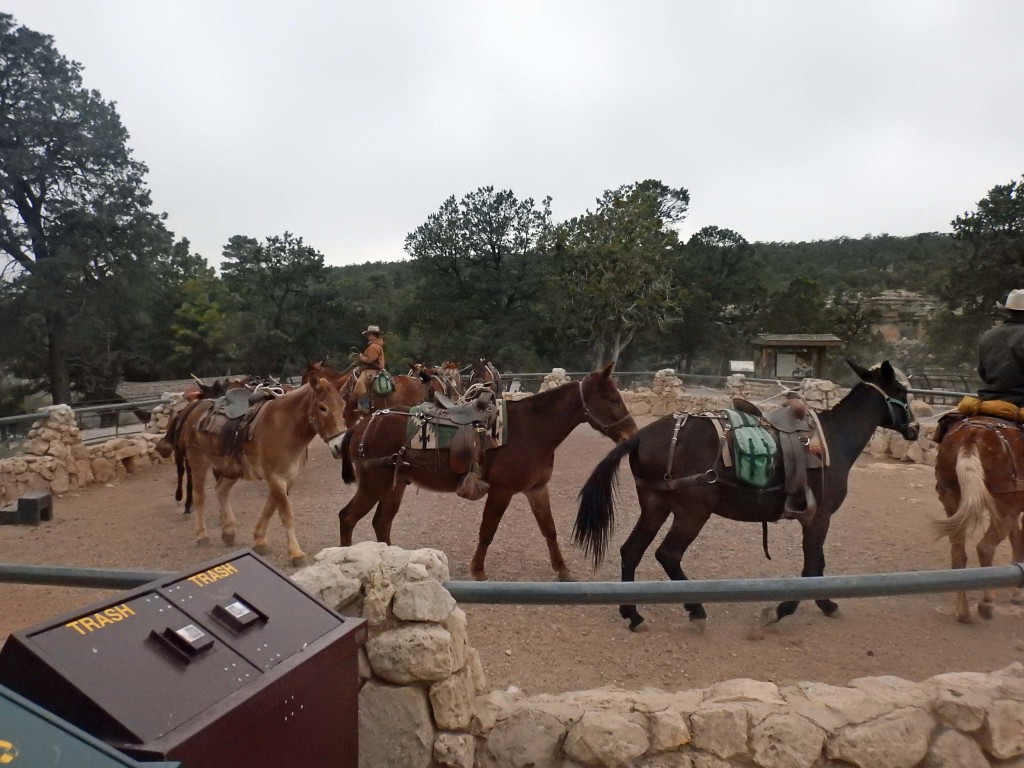
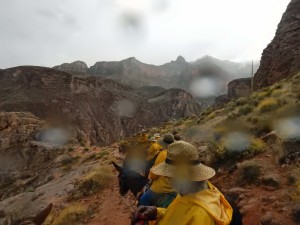
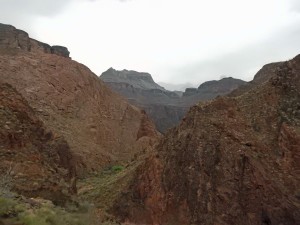
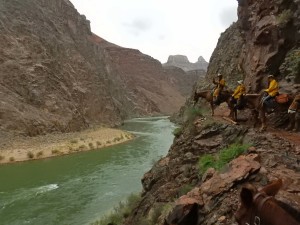
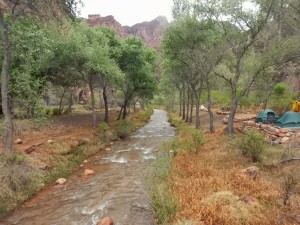

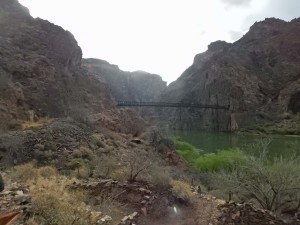
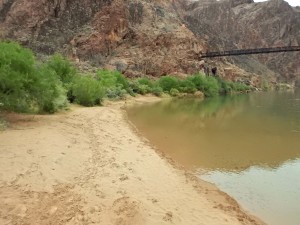

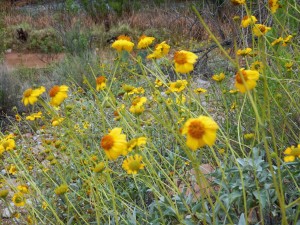
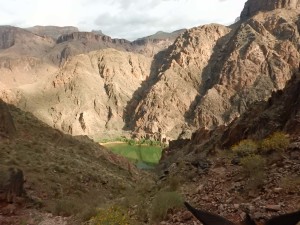
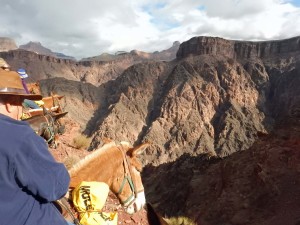
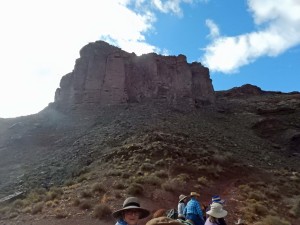
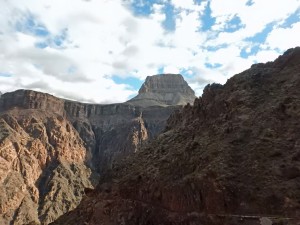
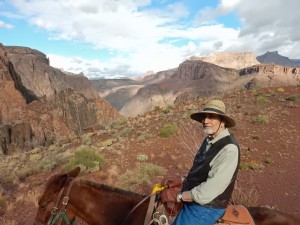
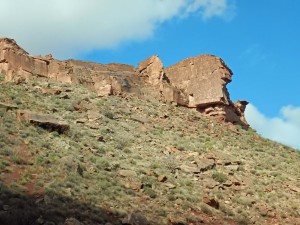

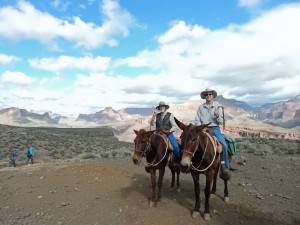
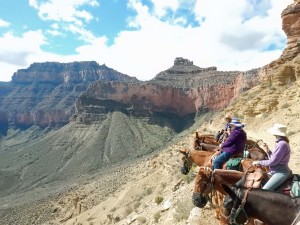
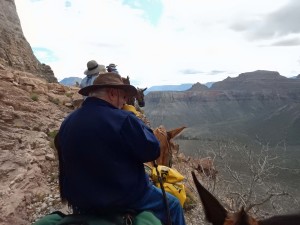
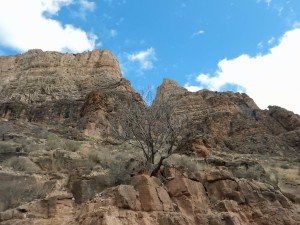
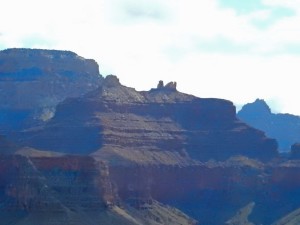
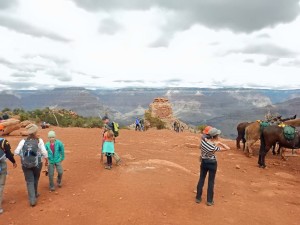
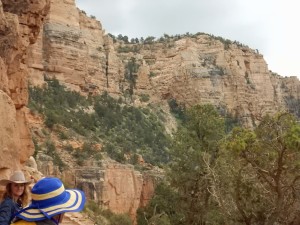
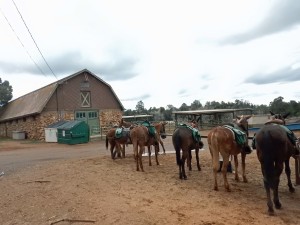

1 comment for “Riding into History”